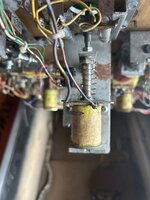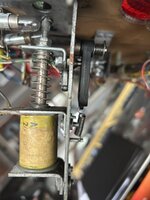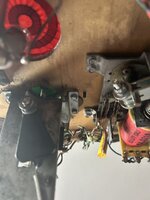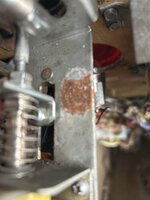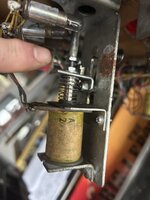Anyone with a Big Guns can tell me what the knack is to adjusting the Forcefield post so it stays down when it's supposed to please? Also give me an idea of when it's supposed to be up and when it's supposed to be down?
#I get that if you hit the top target when it is lit the post is supposed to pop up and guessing that it's supposed to pop up when you get "you're invincible".
The one on the machine I am working on is up all the time.
I can push it down so it catches at the start of a game (since as I have the glass off - I obviously can't do that once I put the glass back on!) but first time it pops up it stays up. Seems to pull down 3 times and then stay popped up - like it's not catching in the down position properly.
I have checked the plastic actuator and it appears to be in good nick. I've also replaced the old extension spring which was loose and saggy but if anything that seems to have made it worse as it pulls the actuator over to the left preventing it from catching in the down position all the time.
Also, any clues as to what lock I need for the backbox? It seems to have some kind of bespoke cam on it (I had to drill the old one out to get in to it)?
Thanks
Andy
#I get that if you hit the top target when it is lit the post is supposed to pop up and guessing that it's supposed to pop up when you get "you're invincible".
The one on the machine I am working on is up all the time.
I can push it down so it catches at the start of a game (since as I have the glass off - I obviously can't do that once I put the glass back on!) but first time it pops up it stays up. Seems to pull down 3 times and then stay popped up - like it's not catching in the down position properly.
I have checked the plastic actuator and it appears to be in good nick. I've also replaced the old extension spring which was loose and saggy but if anything that seems to have made it worse as it pulls the actuator over to the left preventing it from catching in the down position all the time.
Also, any clues as to what lock I need for the backbox? It seems to have some kind of bespoke cam on it (I had to drill the old one out to get in to it)?
Thanks
Andy
Last edited:

